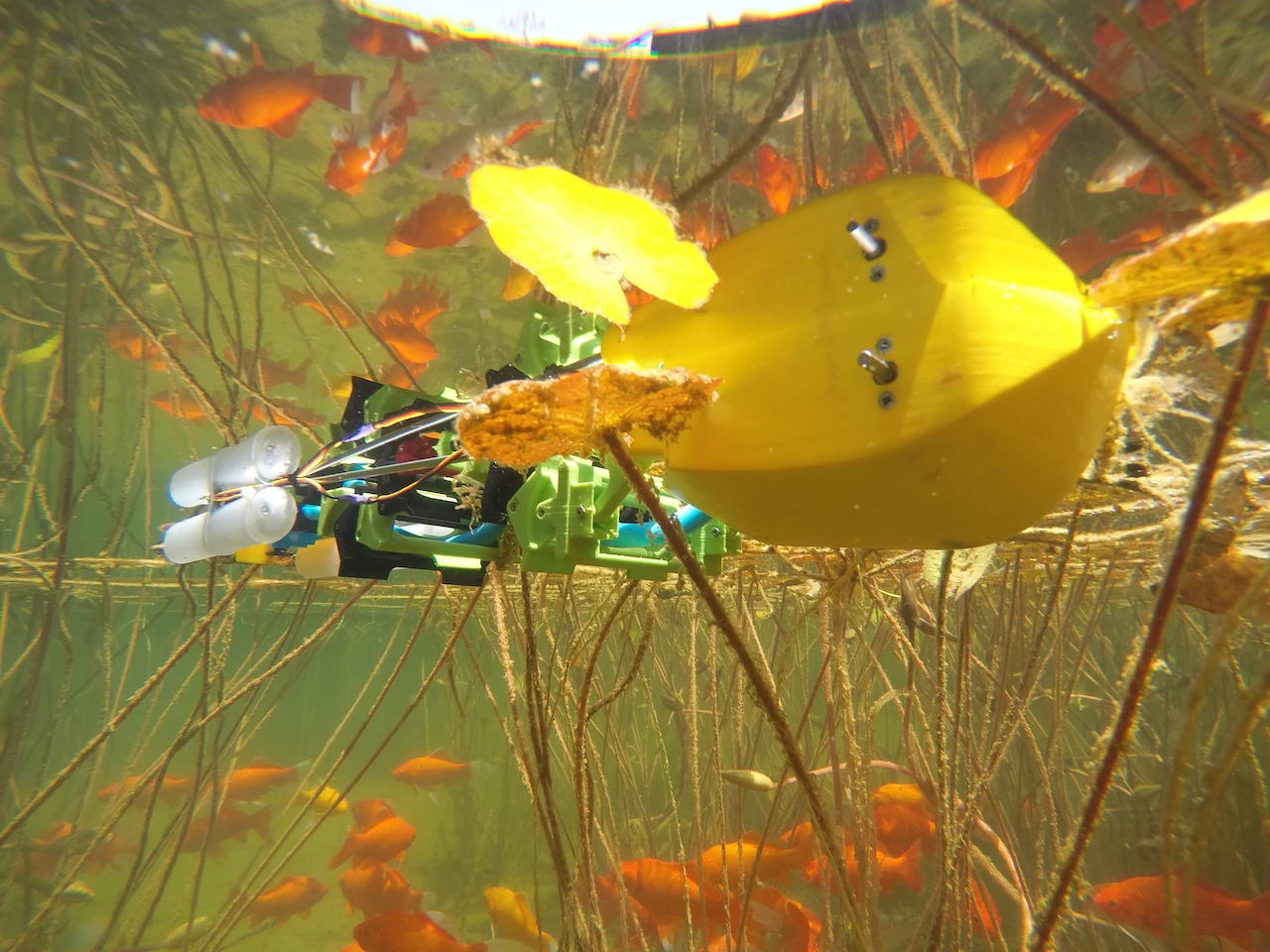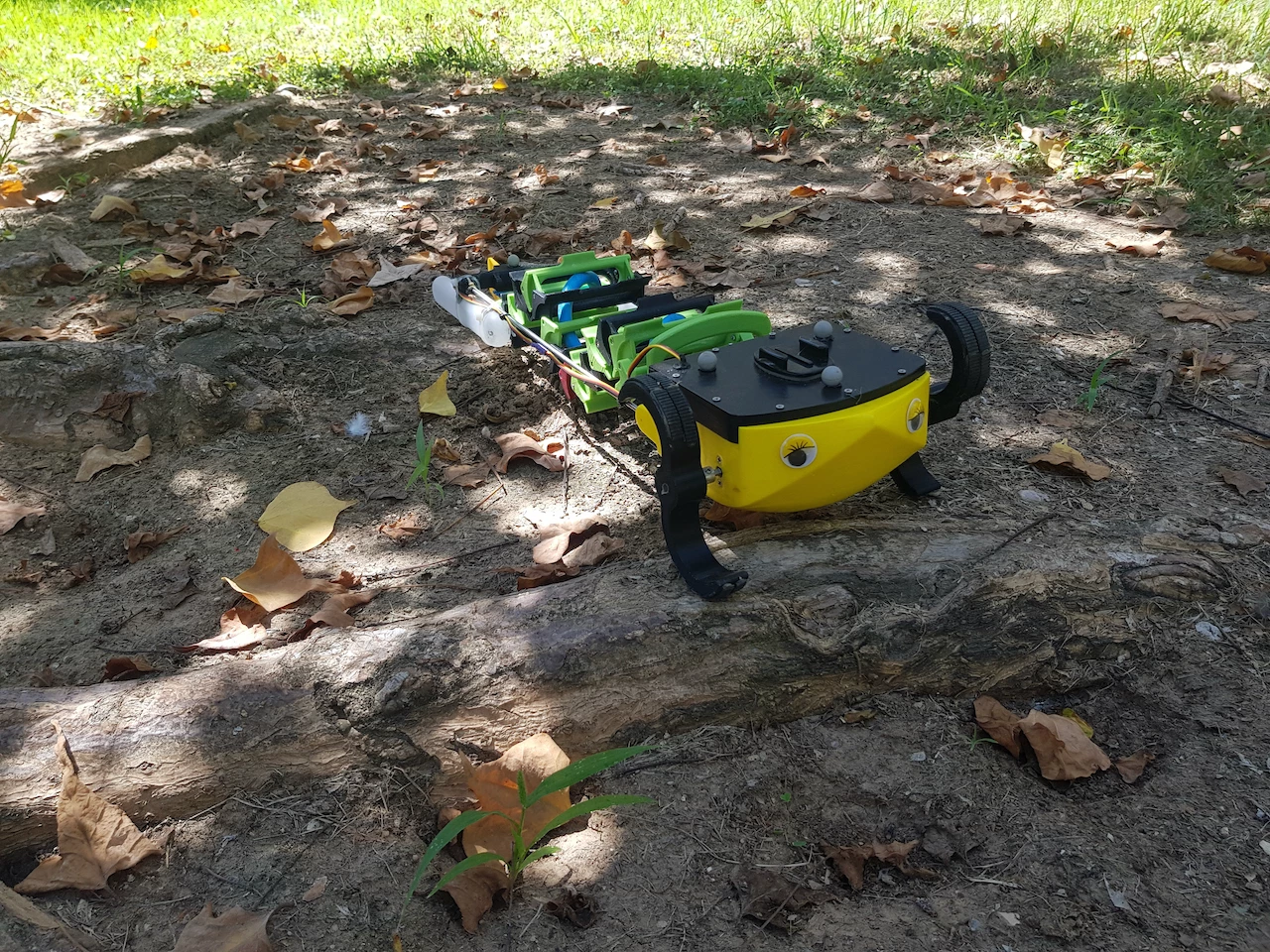Robots that move across both land and water are potentially very useful, but they also tend to be complex and rather slow. A new bio-inspired amphibious bot, however, utilizes a relatively simple mechanism to undulate at a good clip.
Developed at Israel's Ben-Gurion University of the Negev, the AmphiSAW robot was inspired by the manner in which salamanders and snakes move through the water, and by the fashion in which centipedes make their way along the ground.
Measuring 51.3 cm long by 16.4 cm wide (20.2 by 6.5 in) and tipping the scales at 1,245 grams (44 oz), the robot's mostly 3D-printed body consists of a head module in front, a vertically undulating tail in the middle, plus two floats and an electronically steerable rudder at the rear. Contained within the head are three motors along with a battery, microcontroller, GPS unit and radio receiver.

The tail is made up of a corkscrew-like horizontal helix, which winds its way through the middles of 14 connected hollow paddle links. One of the motors in the head module rotates the helix, causing the links to sequentially move up and down, producing a continuous series of sine waves that travel along the length of the tail.
This unique style of locomotion allows the AmphiSAW to crawl along the ground at a speed of 1.5 body lengths per second (B/s), and to swim across the surface of the water at 0.74 B/s. That said, the robot's head can be equipped with two rotating legs or wheels, which are independently propelled by the other two motors.
In this configuration, the land speed increases to 4 B/s, the robot is better able to climb over obstacles, and its legs/wheels can be used for differential steering. The swimming speed also goes up by nearly 50%, but there is a tradeoff … the legs/wheels add a lot of drag and consume a lot of power when used in the water, so they're not recommended for mainly aquatic applications.

The robot can be radio remotely controlled in real time, or it can be preprogrammed to autonomously follow a series of GPS waypoints.
According to the scientists, the speedy yet simple and inexpensive AmphiSAW boasts "the lowest cost of transport among all amphibious robots reported in literature" (if used without the added legs or wheels). The technology can also easily be scaled up or down, for use in applications such as search and rescue, marine research, and aquaculture.
A paper on the research – which was led by Dr. David Zarrouk and his student Omer Guetta – was recently published in the journal Bioinspiration & Biomimetics. The AmphiSAW robot can be seen in action, in the video below.




